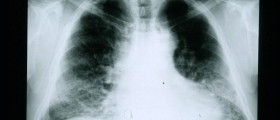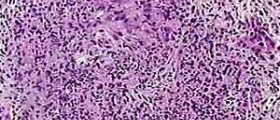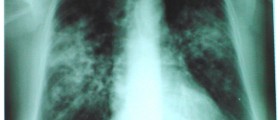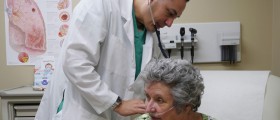
The human body is a very complex structure, made of many organs and systems that coordinate perfectly. The systems in the humanbody are very important for the survival. When one of the body’s systems isaffected by some disorder or disease, it usually affects the other systems aswell. The respiratory system, which is also calledpulmonary system, is essential for the survival since it provides the body withoxygen. The major organ of the respiratory system is the lungs.
When one breathes, he/she inhales and exhales theair. The inhaled air travels through the nose or mouth, then through thenasopharynx, larynx and trachea and then to the bronchi and bronchioles. Afterwards,the air is passed to the places where the gas exchange occurs. The alveoli are tinysacs that have thin walls, which is suitable for the exchange of carbon dioxideand oxygen. Since the role of the lungs is very important, it iscrucial to maintain them healthy. However, there are several disorders anddiseases that can affect the respiratory system. The most common lung diseasesare water retention within the pleural cavity, inflammation of trachea orbronchial tubes, and many other disorders that affect nerves and muscles in the upperrespiratory tract.
Granulomatous lung disease
It is estimated that every seventh person has aproblem with respiratory system. Granulomatous lung disease is considered to beone of the chronic lung diseases along with pulmonary embolism and asthma. Whengranulomatous lung disease occurs, it usually causes serious lung damage. Granulomatous lung disease is caused by the antineutrophilcytoplasmic antibodies or destructive circulating antibodies that affect thesmall blood vessels in the lungs, as well as around the lungs. It is extremelyimportant to treat this disease immediately when it is noticed, since it can befatal if it is left untreated.
Symptoms of granulomatous lung disease
Granulomatous lung disease is a lung disease thathas its characteristic symptoms. One of the most common warning signs of thislung disorder is runny nose or rhinitis, which occurs due to the inflammation ofthe mucous membrane. Furthermore, nasal congestion, nosebleeds and eye or earinfections are also the symptoms of granulomatous lung disease. The people who suffer from this disease may alsoexperience the loss of hearing, which occurs due to the auditory tubedysfunction. Strawberry gingivitis, mouth ulcers, purpura and arthritismay also appear due to granulomatous lung disease. Other symptoms of this lung disease includescleritis, pulmonary hemorrhage, subglottal stenosis and sensory neuropathy.

















Your thoughts on this
Loading...